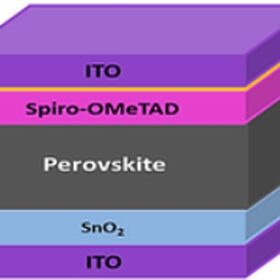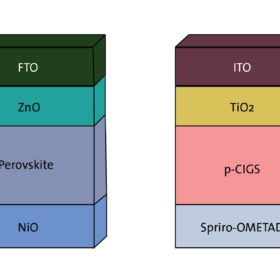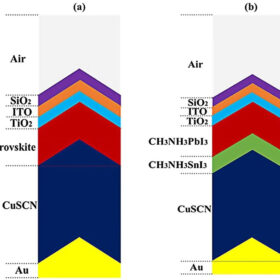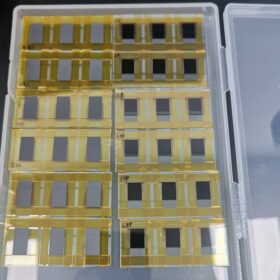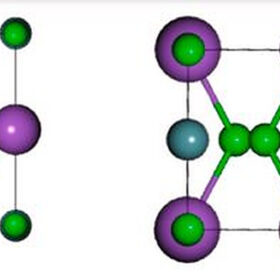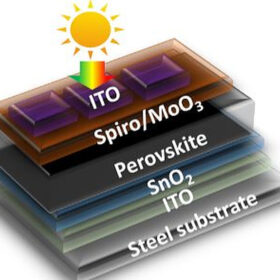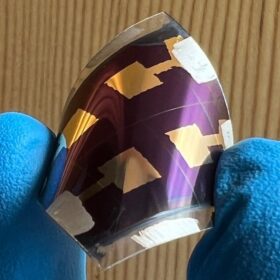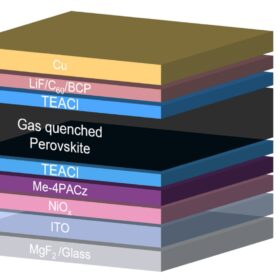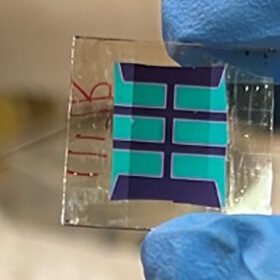Bifacial perovskite solar cells for indoor applications achieve 30.3% efficiency
Scientists in India have fabricated indoor bifacial perovskite solar cells that purportedly achieve remarkable power output per single cell. The devices also reached a bifaciality factor of 0.73.
Novel perovskite/CIGS tandem PV cell design promises 38.39% efficiency
A research team in Bangladesh has simulated a perovskite-CIGS PV device that can reportedly achieve a remarkable tandem cell voltage of 2.48 V. The proposed method is also applicable for tandem cells composed of other materials.
New perovskite solar cell design with silicon dioxide anti-reflector layer
Researchers in Iran have designed a new light trapping (LT) structure for perovskite solar cells that reportedly achieves optimal light absorption without impacting the electrical properties of the cells. The key element of the device is an anti-reflector layer based on silicon dioxide (SiO2) that improves light harvesting and charge extraction performance.
Printable mesoscopic carbon perovskite solar cell achieves 17.13% efficiency
Scientists in China have built a tandem bifacial mesoscopic perovskite solar cell via a new passivation strategy. The cell achieved an improved power output and voltage, and the researchers said it offers potential applications in practical usage.
Inverted perovskite solar cell based on methyl-substituted carbazole HTL achieves 20.1% efficiency
Indian scientists built an inverted perovskite PV device that uses a self-assembled monolayer to suppress nonradiative recombination at the interface between the perovskite absorber and the hole transport layer. The cell achieved remarkable efficiency and was also able to retain the initial efficiency rating for 3,00 h.
New perovskite material for lead-free solar cells
An Algerian research group has analyzed the electronic, elastic, optical, and thermoelectric characteristics of the KGeCl3 perovskite to verify if this lead-free material may be used for solar cells and other electronic devices. The scientists found that the novel material has a direct bandgap semiconductor with bandgap energies of 0.92 eV, 1.26 eV, and 1.88 eV for cubic, tetragonal, and orthorhombic phases, respectively.
Perovskite solar cell built on steel substrate achieves record efficiency of 17.1%
Scientists in Australia claim to have achieved the highest efficiency ever reported to date for a perovskite solar cell built on a steel substrate. They utilized an indium tin oxide (ITO) interlayer between the steel substrate and the cell in order to avoid iron diffusion from the substrate into the PV device.
Flexible indoor perovskite solar cell achieves 32.5% efficiency
Italian scientists have developed a flexible indoor perovskite solar cell with 32.5% efficiency. Their design uses a PET substrate combined with a tetrabutylammonium bromide layer over the perovskite absorber. This additional layer effectively reduces defect density and enhances the stability of the underlying 3D perovskite structure.
Imec presents inverted perovskite solar cell with 24.3% efficiency
The researchers of the Belgian research institute used a dual-layer treatment for the perovskite absorber, which they said improved the cell efficiency and stability. The device achieved an open-circuit voltage of 1.17 V, short-circuit density of 24.5 mA/cm2, and a fill factor of 84.6%.
NREL develops perovskite solar cells with 93% bifaciality
The National Renewable Energy Laboratory (NREL) has made highly bifacial perovskite cells with a front-side efficiency of 23%.
